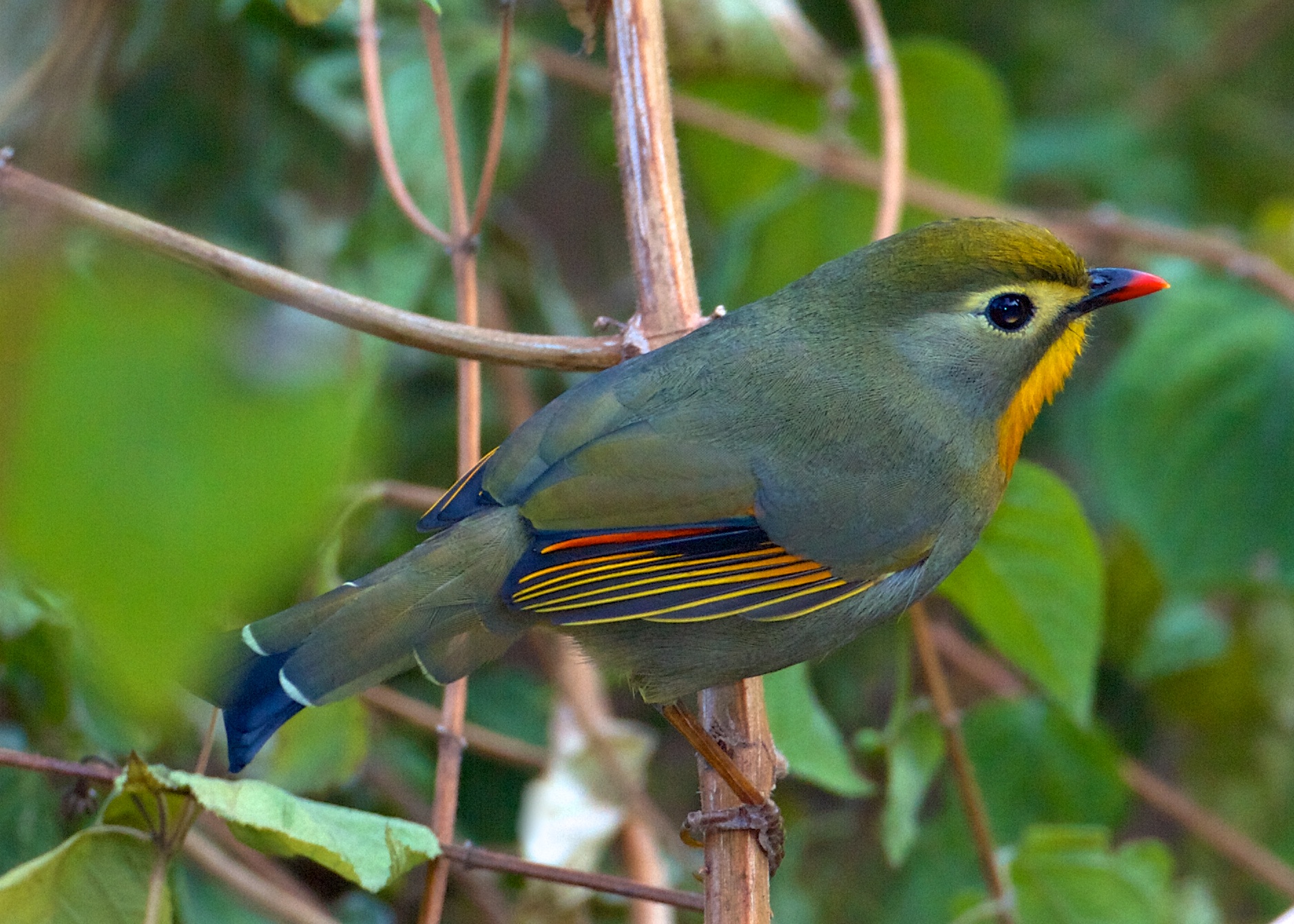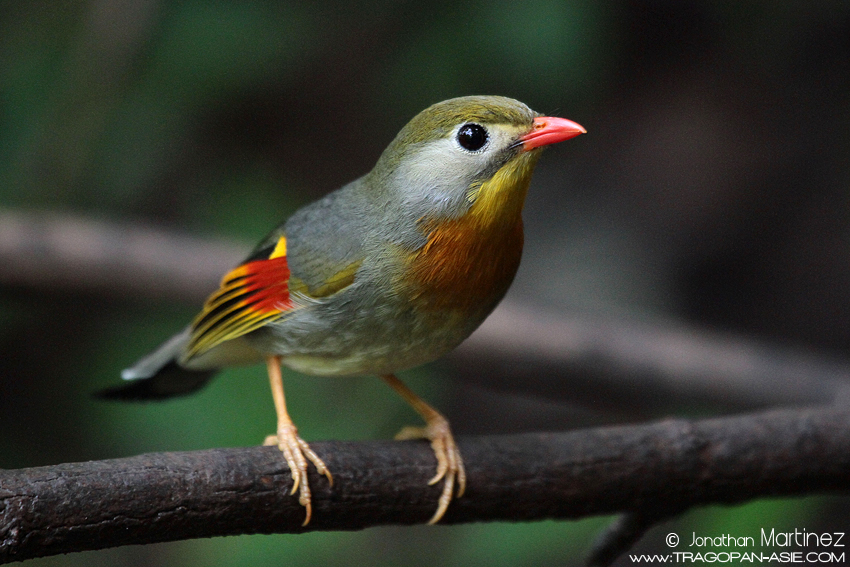
Leiothrix lutea
SUBFAMILY
Timaliinae
TAXONOMY
Sylvia lutea Scopoli, 1786, Anhui. Five subspecies generally recognized.
OTHER COMMON NAMES
English: Pekin robin, red-billed hill tit; French: Lйiothrix
jaune; German: Sonnenvogel.
PHYSICAL CHARACTERISTICS
6 in (15.5 cm); 0.8 oz (22 g). Unmistakable combination of
red bill, dark eyes with white ring, orange chest, yellow
throat, olive back, orange and yellow wings, and uniquely
forked tail.
DISTRIBUTION
The length of the Himalayas, Assam, western and northern
Myanmar, southern China, northern Vietnam. Introduced in
Hawaiian islands of Oahu, Hawaii, Maui, Molokai, and Kaua’i,
though now possibly extinct on last island.
HABITAT
Undergrowth of secondary forests and bamboo stands, gardens.
BEHAVIOR
Found in groups, which, when perched, typically maintain
close bodily contact with frequent mutual preening. In winter,
moves to lower elevations.
FEEDING ECOLOGY AND DIET
Groups mostly forage near ground for insects, fruits, seeds, and
flowers.
REPRODUCTIVE BIOLOGY
Apparent group courtship, followed by pairs separating off and
setting up territories. Distinctive male territorial song. Both
sexes build cup-shaped nest from a variety of plant materials
and cocoon silk. Usual clutch three to four greenish white, variously
speckled eggs.
CONSERVATION STATUS
Not threatened. Massive exploitation for cage bird trade led
to listing as CITES Appendix II in 1997. China banned commercial
export of songbirds in 2001. Mysterious, brightly colored
L. lutea astleyi may represent a population trapped to
extinction.
SIGNIFICANCE TO HUMANS
Enormously popular cage bird. Implicated in spreading malaria
to native Hawaiian birds.
Other popular Animals
Photo Gallery of - Red-billed leiothrix




 Animalia Life
Animalia Life